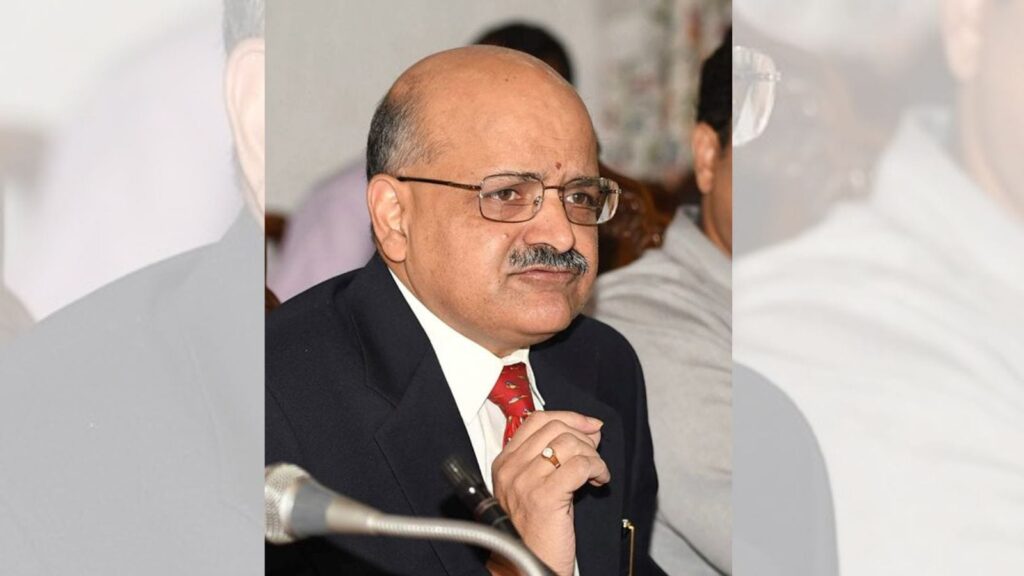970x125
India’s annual GDP growth needs to be 8 per cent, and not 6.5 per cent, if it wants to achieve its target of becoming a developed economy by 2047, said BVR Subrahmanyam, CEO, NITI Aayog, while highlighting the crucial role statistics needs to play in policymaking.
970x125
“This data business is very, very important for our goal of Viksit Bharat. After all, if you grow at 6.5 per cent, you will not be Viksit Bharat; (if) you grow at 8 per cent, you will be Viksit Bharat,” Subrahmanyam on Thursday. “It looks very small, 1.5 per cent. But the difference, I tell you, in 2047 is going to be immense… What looks very minuscule can have major, major difference at the end,” the NITI CEO added while speaking at a sensitisation-cum-review meeting with statistical advisers in various ministries and departments, organised by the Ministry of Statistics and Programme Implementation (MoSPI).
Subrahmanyam’s comments come amid risks to India’s economic growth from the 50 per cent tariff announced by the US earlier this month, with the 25 per cent penalty component coming into force on August 27. While economists have predicted a potential hit of about 50 basis points (bps) to India’s 2025-26 GDP growth from the 50 per cent tariff, S&P Global Ratings on Thursday said the effect will be “manageable” as it upgraded India’s rating to BBB from BBB-.
India’s GDP growth has edged lower recently, with the 6.5 per cent growth recorded in 2024-25 being the lowest in four years. Last week, the Reserve Bank of India (RBI) retained its growth forecast for the current fiscal at 6.5 per cent, with Governor Sanjay Malhotra saying that while there is a lot of uncertainty, the central bank did not have “sufficient data to revise our GDP forecasts”. Hours later on the same day, US President Donald Trump announced that the previously-threatened ‘penalty’ for importing Russian energy and arms was 25 per cent, taking the total tariff rate to 50 per cent for Indian goods entering the world’s largest economy from August 27.
Data-based policymaking
Speaking at the MoSPI meeting on Thursday, Niti CEO Subrahmanyam said statistical advisers had a “major, major role to play” and that the government has to move towards data and evidence-based decision and policymaking. “And you are providers of the evidence and you are also the providers of the analysis of the evidence… If you are not able to provide, somebody else will be asked to provide. We need to develop those skills within ourselves. We should all be proficient in the latest tools and techniques that are there.”
Highlighting the importance of data in decision-making, Subrahmanyam said “when you confront people with data, they start improving” as it makes them more accountable.
Chief Economic Adviser V Anantha Nageswaran, also present at the meeting, echoed the NITI CEO’s views, saying statistics are fundamental to an efficient and informed decision-making process, be it at the level of an individual, corporate, or the government.
Story continues below this ad
India to set standards
The government’s top economist also made note of MoSPI’s recent partnerships with several international organisations — such as the United Nations Statistics Division — saying these collaborations were key to aligning India with global best practices. He added that the statistics ministry’s efforts to revamp, update, and modernise official statistics and produce them in a more timely fashion with greater frequency also comes at a time when questions are being raised about the credibility of data in some developed countries, seemingly referring to the sacking of a key US statistician by Trump earlier this month.
“So, sooner rather than later, we will be the ones who will be setting the global standard and the global benchmark,” Nageswaran said,
On August 1, Trump sacked Erika McEntarfer, the Commissioner of the US Bureau of Labor Statistics (BLS), after the agency said that non-farm payrolls — or new jobs outside of agriculture — rose by just 73,000 in July, while the numbers for the previous two months were revised downwards by more than a quarter of a million to a mere 19,000 for May and 14,000 for June. Trump claimed the jobs numbers were being “rigged” to make him and the Republican party “look bad”.
© The Indian Express Pvt Ltd
970x125


